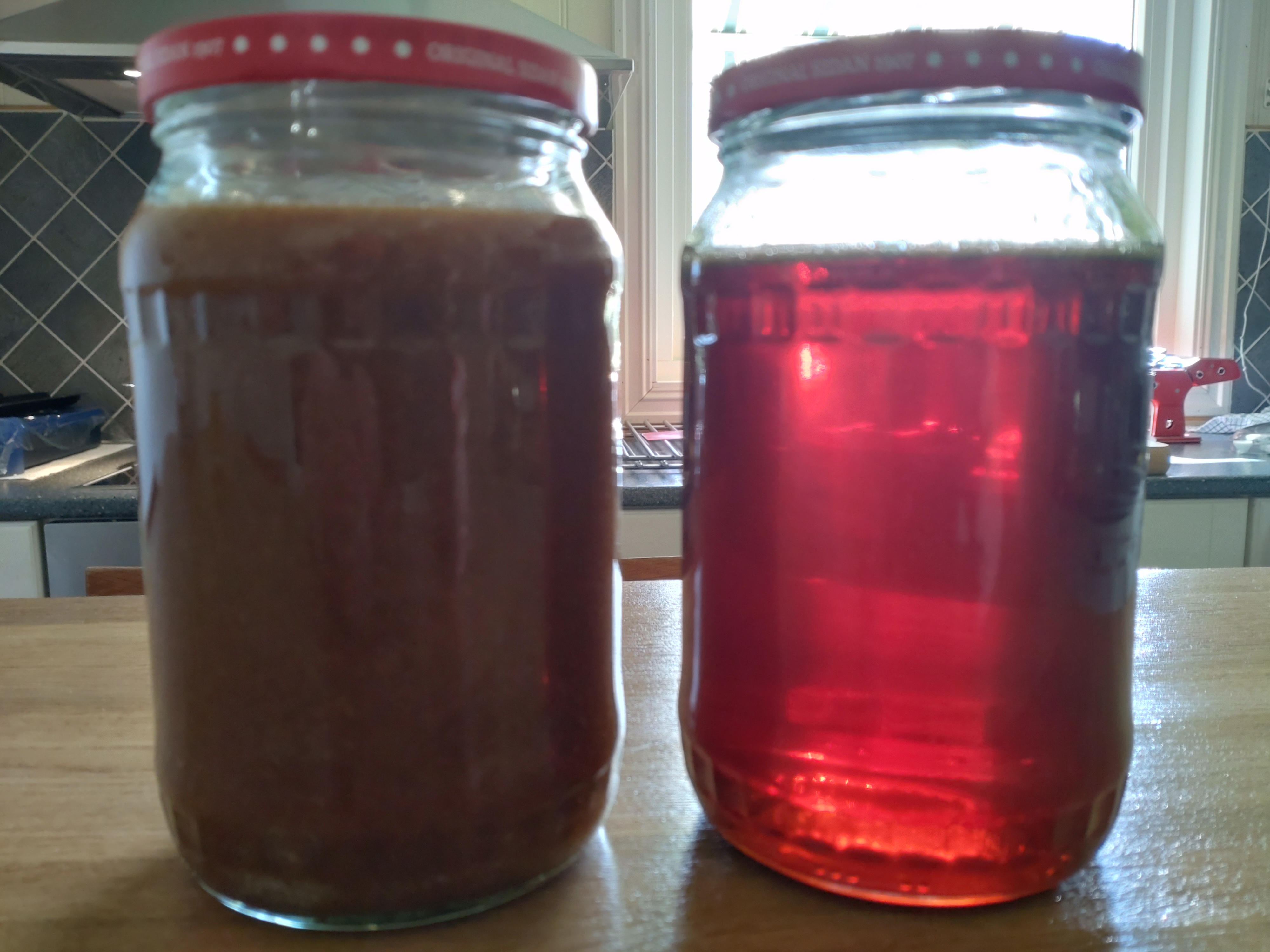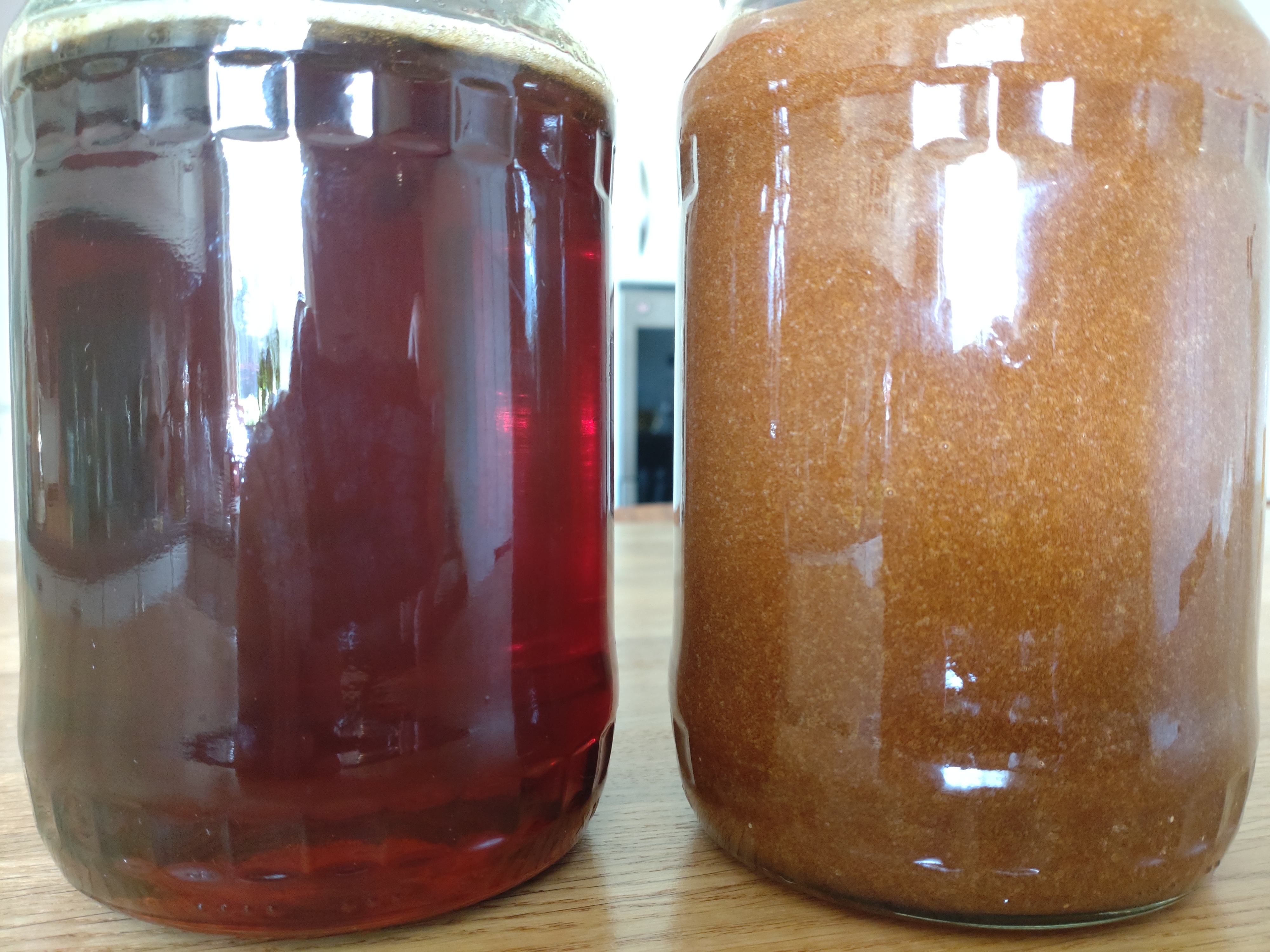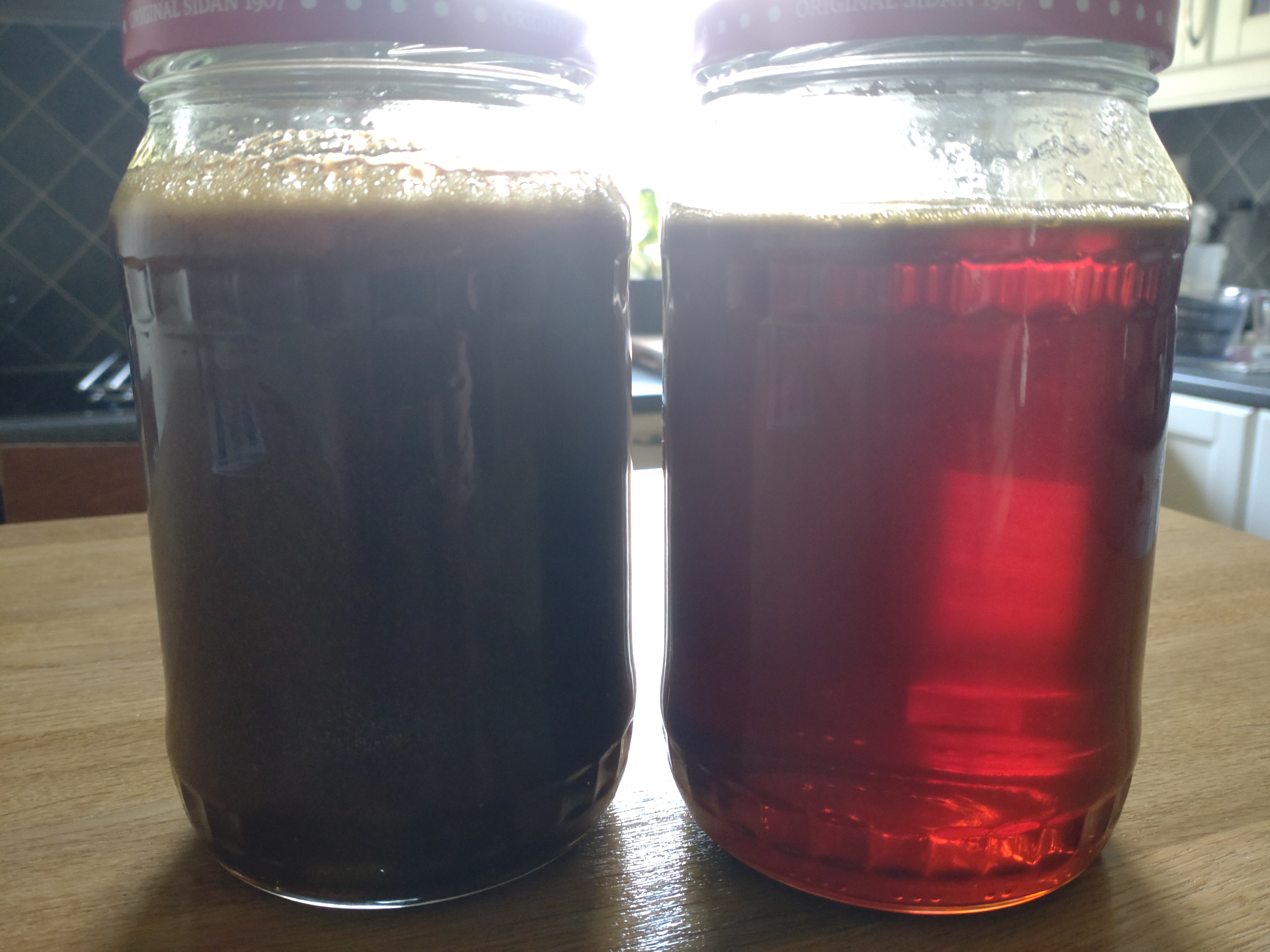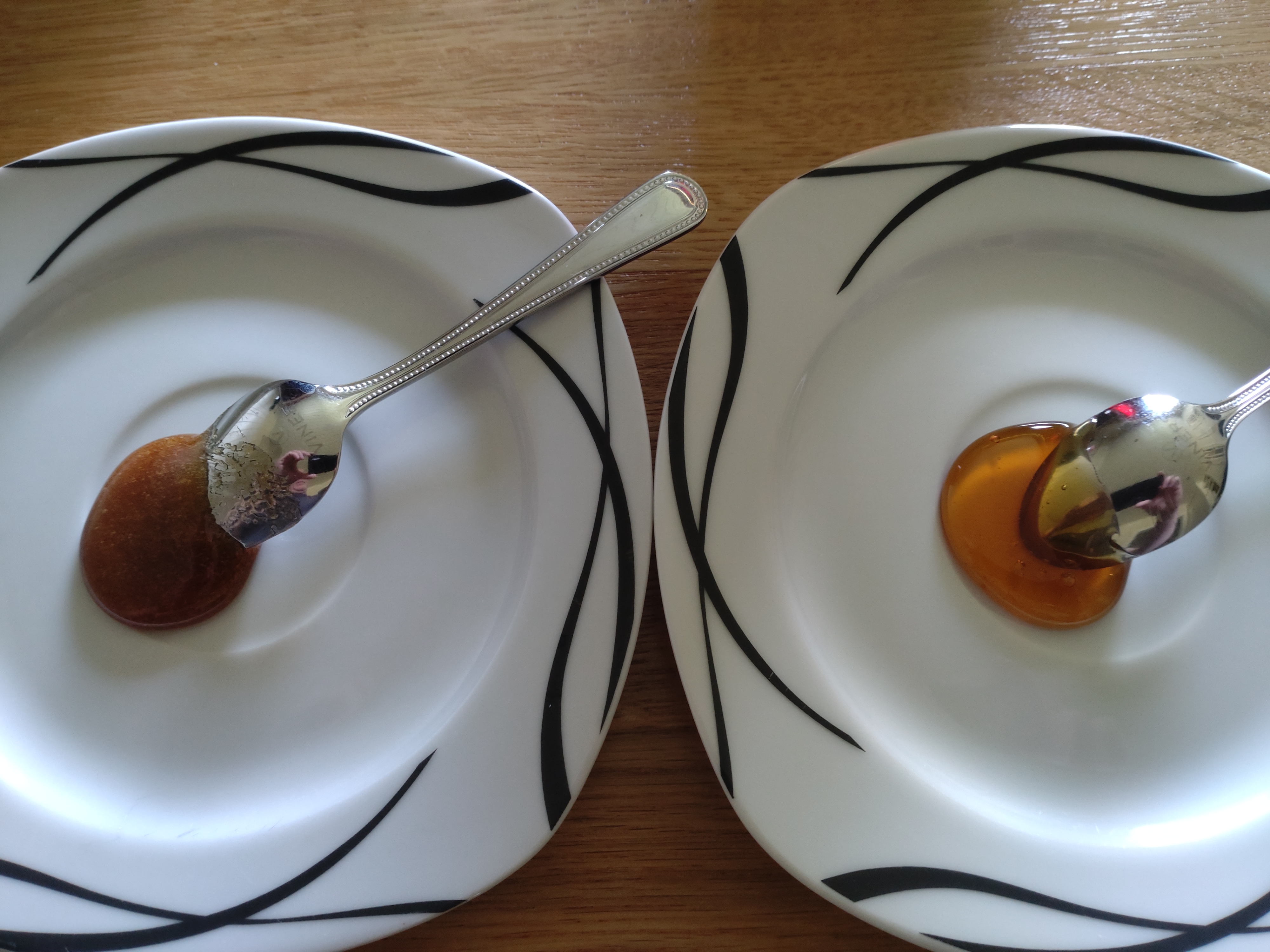McMullan
wort maker
- Joined
- Dec 22, 2015
- Messages
- 2,566
- Reaction score
- 3,461
A fortuitous fail?
All prepped with 660g Demerara and 340g tap water weighed out.
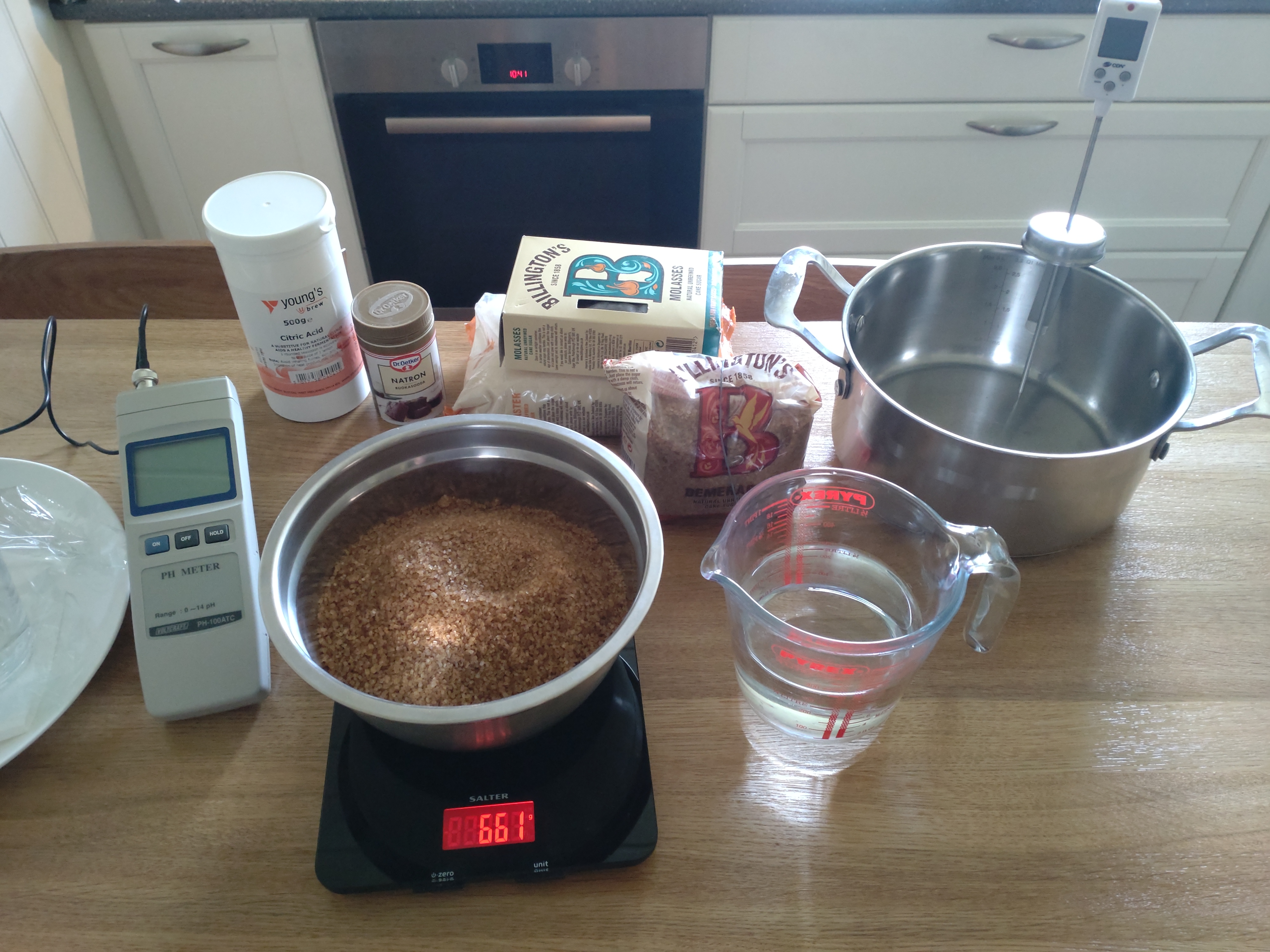
For some reason I focused on a 66% solution. Heated water to 70°C then slowly added sugar while stirring constantly.
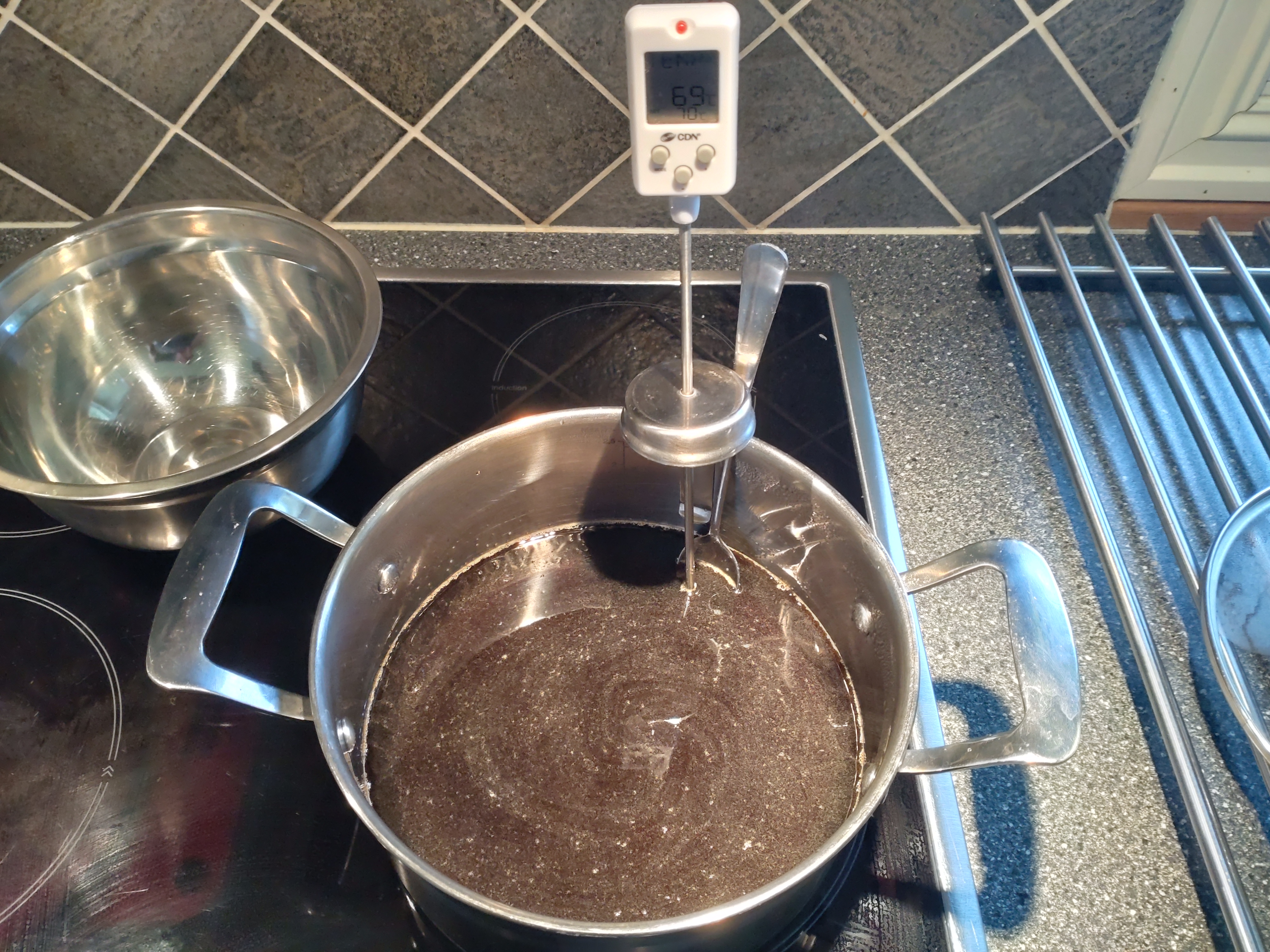
Took quite a while to dissolve, before adding 2.4g citric acid.

Some reaction seemed to clear the solution a bit. Maintained at 70°C for about 15 minutes with stirring, without noticing much more than my boredom stirring constantly. It appeared very watery, not much of a syrup, so I decided to add another 340g Demerara, 1kg in total, 2-3 tbsp a go while stirring constantly.
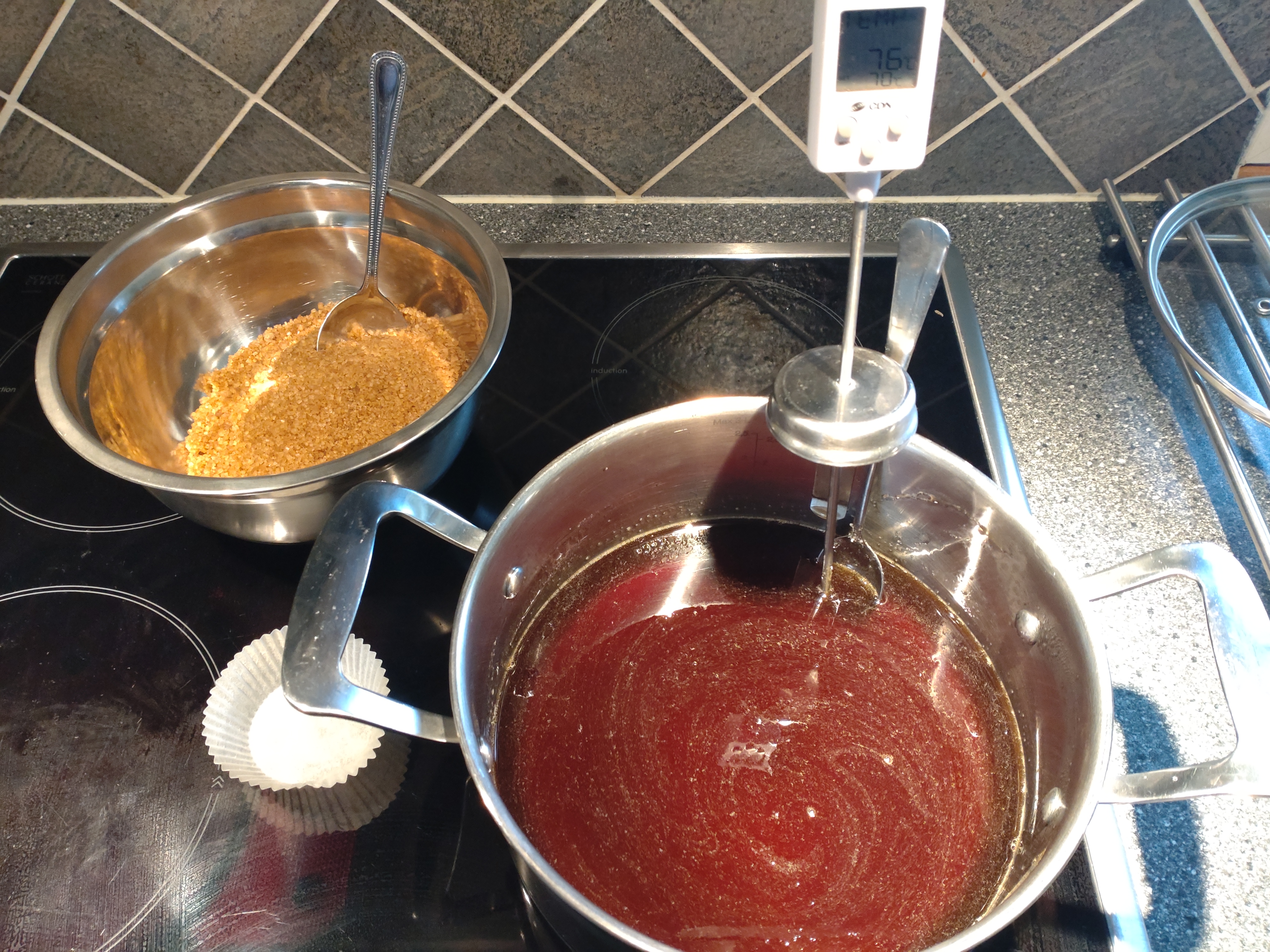
It didn't want to dissolve much, according to my bored self stirring away, getting conscious of the hands-in time clocking up. So I turned the heat up a bit. Then a bit more. That seemed to do the trick. So I turned it up even more.
Before I knew it, it was at 110°C.

Then 116°C.
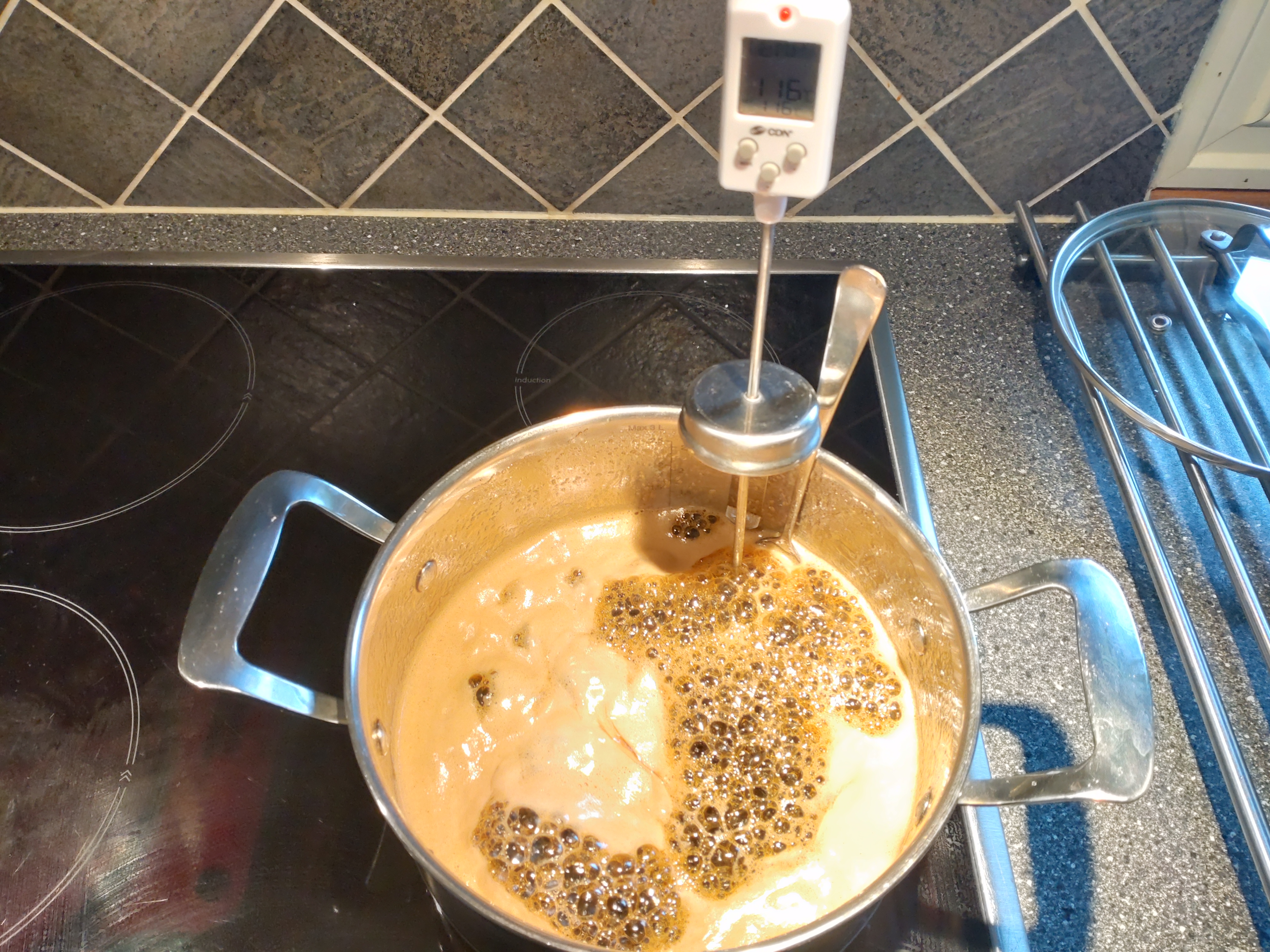
It normally takes ages to reach 116°C. Looks like adding less water gets it to 116°C a lot sooner. Sounds obvious now
Then I stirred in 2.9g NaHCO3 and now it looks like a Demerara honeycomb.
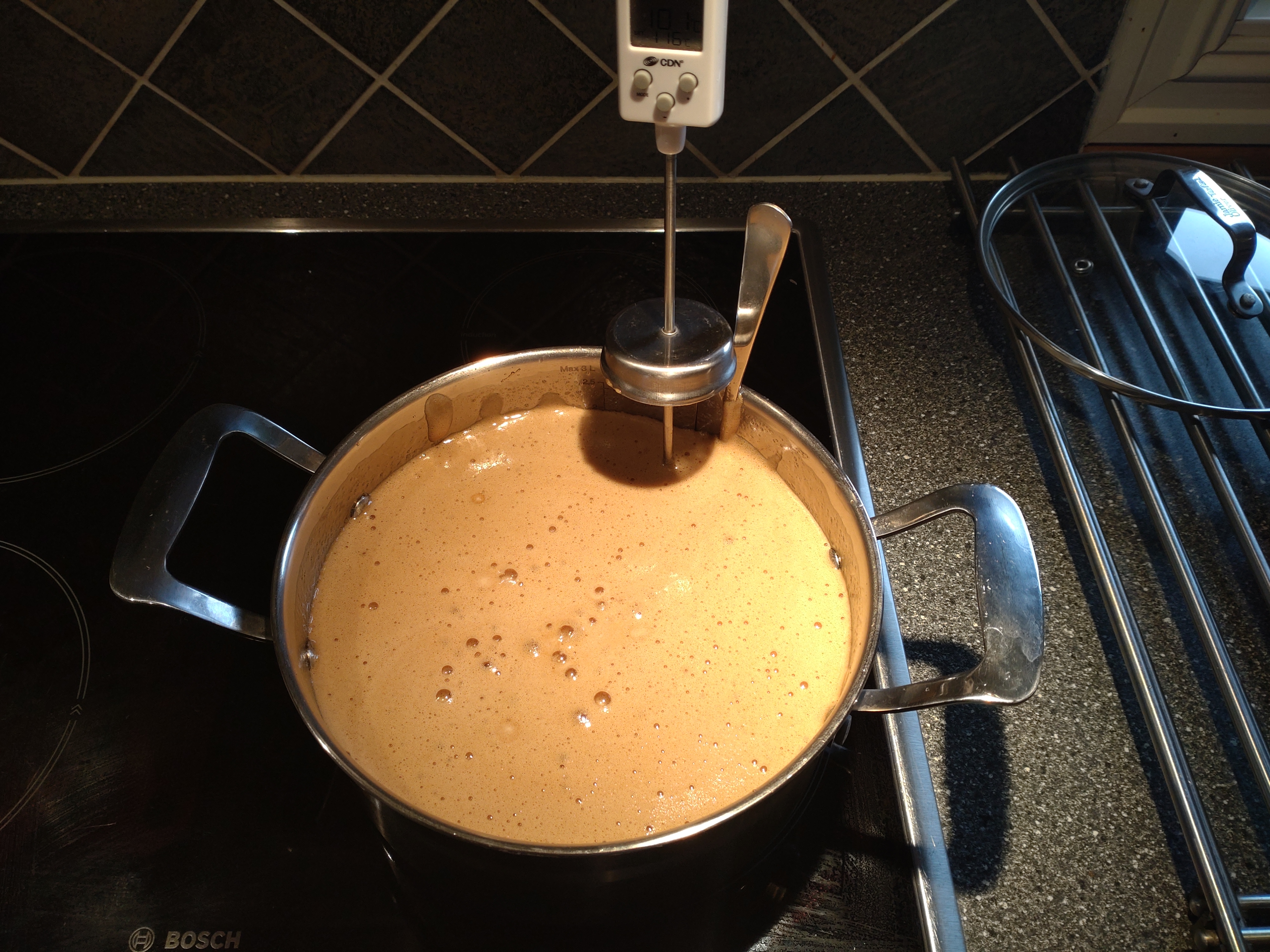

So I'm thinking about brewing a Demerara Honeycomb Brown Ale this Friday.
Maris Otter (82%)
Chocolate Malt (2%)
Demerara Honeycomb (16%)
Bramling Cross 60min (30g)
Bramling Cross 40min (30g)
Bramling Cross 20min (40g)
OG = 1.053
IBU = 42

All prepped with 660g Demerara and 340g tap water weighed out.

For some reason I focused on a 66% solution. Heated water to 70°C then slowly added sugar while stirring constantly.

Took quite a while to dissolve, before adding 2.4g citric acid.

Some reaction seemed to clear the solution a bit. Maintained at 70°C for about 15 minutes with stirring, without noticing much more than my boredom stirring constantly. It appeared very watery, not much of a syrup, so I decided to add another 340g Demerara, 1kg in total, 2-3 tbsp a go while stirring constantly.

It didn't want to dissolve much, according to my bored self stirring away, getting conscious of the hands-in time clocking up. So I turned the heat up a bit. Then a bit more. That seemed to do the trick. So I turned it up even more.
Before I knew it, it was at 110°C.

Then 116°C.

It normally takes ages to reach 116°C. Looks like adding less water gets it to 116°C a lot sooner. Sounds obvious now
Then I stirred in 2.9g NaHCO3 and now it looks like a Demerara honeycomb.

So I'm thinking about brewing a Demerara Honeycomb Brown Ale this Friday.
Maris Otter (82%)
Chocolate Malt (2%)
Demerara Honeycomb (16%)
Bramling Cross 60min (30g)
Bramling Cross 40min (30g)
Bramling Cross 20min (40g)
OG = 1.053
IBU = 42
Last edited:
































![Craft A Brew - Safale S-04 Dry Yeast - Fermentis - English Ale Dry Yeast - For English and American Ales and Hard Apple Ciders - Ingredients for Home Brewing - Beer Making Supplies - [1 Pack]](https://m.media-amazon.com/images/I/41fVGNh6JfL._SL500_.jpg)

























